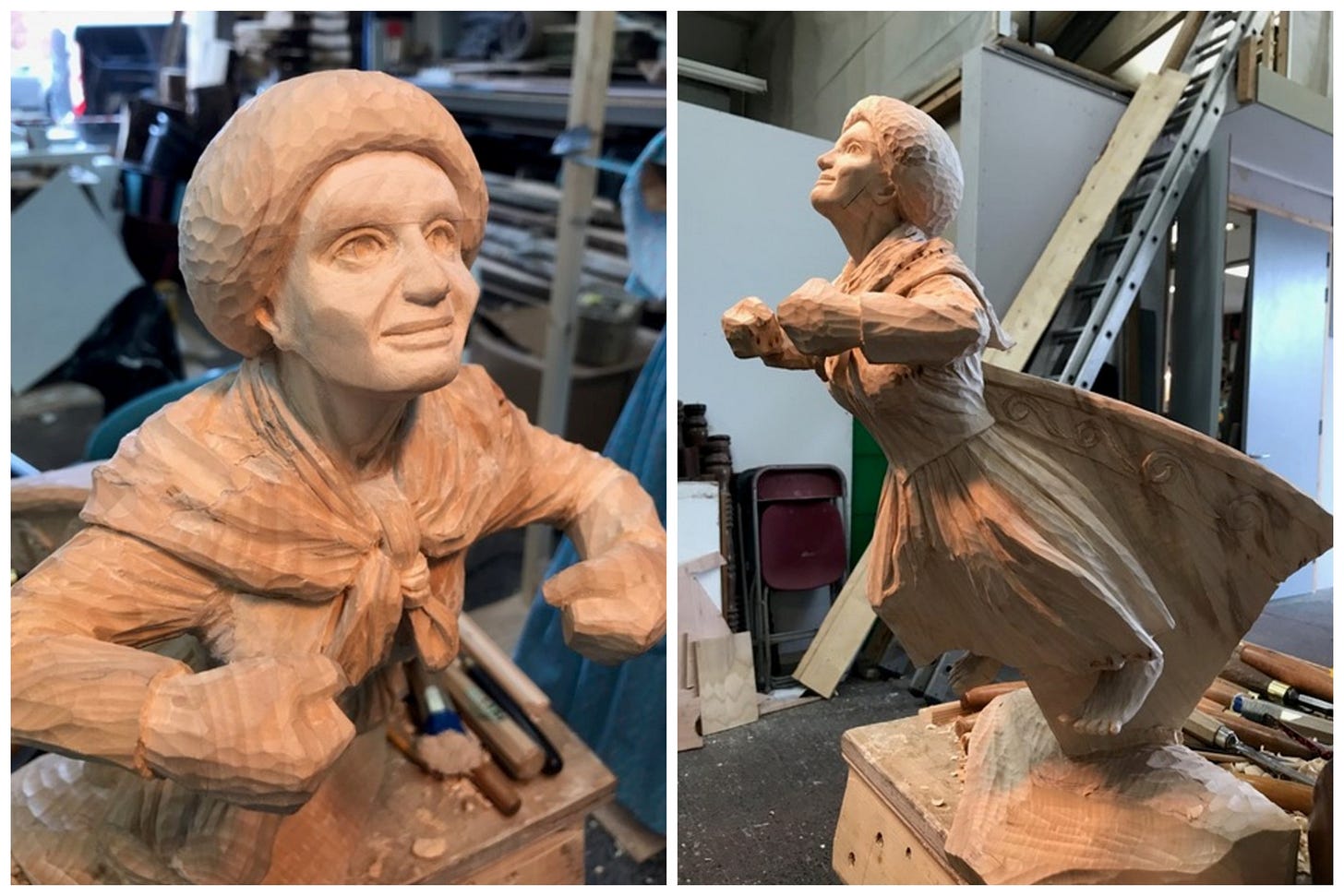From slavery to sanctuary: sculpture to honour Mary Ann Macham in North Shields
The unveiling date has been set for a sculpture of an enslaved woman who crossed an ocean to find freedom on Tyneside. Tony Henderson reports
The unveiling is to take place of a bronze sculpture of an enslaved woman in the Tyneside town where she made a new life after fleeing from America.
The image of Mary Ann Macham will be installed above the new Riverside Embankment Walkway linking North Shields town centre with the Fish Quay and views out to sea.
The artwork will be officially unveiled on November 20 at 1pm by the Elected Mayor of North Tyneside, Karen Clark.
The three-metre-high bronze figure, created by North Shields artist Keith Barrett, will be sited close to where Mary Ann once lived. The project is supported by the North East Combined Authority through the Transforming Cities Fund.
It portrays a moment of freedom and resilience and is part of the North Shields 800 celebrations, a year-long programme recognising the town’s diverse history.
Mary Ann fled a Virginia plantation, evading capture and stowing away aboard a ship to Europe. She arrived in North Shields by road on Christmas Day 1831, where she was taken in by the local Spence family, prominent Quakers who campaigned for the abolition of slavery.
In his two-year project, Keith has combined the imagery of Mary Ann in the style of a ship’s figurehead but also portrayed her as a real person, with outstretched arms, shackles and broken chains.
“She is pictured at the moment of freedom. I was anxious to get as close as I could to the one picture we have of her.
“She is also a figurehead for her courage in escaping, crossing the ocean and finding freedom, and is an inspiration for people to look up to.”
The sculpture references Mary Ann’s long sea journey and the North Shields tradition of the wooden dolly figureheads.
Karen Clark said: “Mary Ann’s story is one of extraordinary courage, and it’s right that we honour her legacy in the heart of the town she came to call home.
“This sculpture is a powerful symbol of resilience and community support, values that are still at the heart of North Tyneside today. I’m proud to unveil this artwork as part of our North Shields 800 celebrations, and I hope it inspires reflection and pride in our shared history.”
Keith Barrett said: “I am very pleased to have been given the opportunity to create this sculpture celebrating the life of Mary Ann Macham.
“It has been particularly important to me because North Shields is my home town, and I feel honoured to be able to mark the bravery and insistence on freedom shown by Mary Ann, and the compassion and support for human rights and justice displayed by the Quaker community in North Shields, and all those townspeople who enabled her to settle and marry, and live out the rest of her life in safety and freedom.
“I believe that Mary Ann’s story will resonate with the lives and experience of many of us, and wish that she may become a source of inspiration and hope to all who struggle through difficult and dark times - that their chains can be broken and their freedom found.”
Mary Ann’s statue joins a series of public artworks in North Shields, including a tribute to Second World War hero Thomas Brown in the new Town Square named after him.
“She will be represented as a real person looking out to sea, and when people walk up from the Fish Quay the effect against the skyline will be dramatic,” said Keith, who studied for an MA in fine art at the then Newcastle Polytechnic.
In 2019 an exhibition titled Breaking Chains, at the Old Low Light Heritage Centre on the Fish Quay, told the story of Mary Ann, who was born in Virginia.
After escaping, she hid in woodland and then concealed herself on a ship bound for Europe. It docked in Holland and Mary Ann boarded another vessel, arriving in Hull, then made her way to North Shields.
She lodged with Robert Spence and his wife at their home in Howard Street in North Shields for several years before marrying James Blyth, a local rope maker, in 1841. Census returns show them living in Howard Street.
James died in 1877 and was buried at the town’s Preston Cemetery. She died in 1893 aged 91, and was buried alongside her husband. But there was no reference to her at the grave and, after the Old Low Light exhibition, a drive began to provide a memorial stone.
Old Low Light volunteer Nina Brown said: “We were so inspired by her bravery and determination that as our exhibition was drawing to a close, we began fundraising to pay for a memorial stone on her unmarked grave in Preston Cemetery.
“We felt that someone who had shown such bravery in escaping a life of servitude and who had become part of the town’s history should have a lasting tribute, so we set about fundraising to pay for a memorial stone.
“We thought this would be a fitting tribute to a courageous woman who became part of 19th-century life in North Shields and who might otherwise be forgotten. We were delighted to hear about this sculpture because such a prominent position on the new walkway means people will be reminded of her story every day.”






